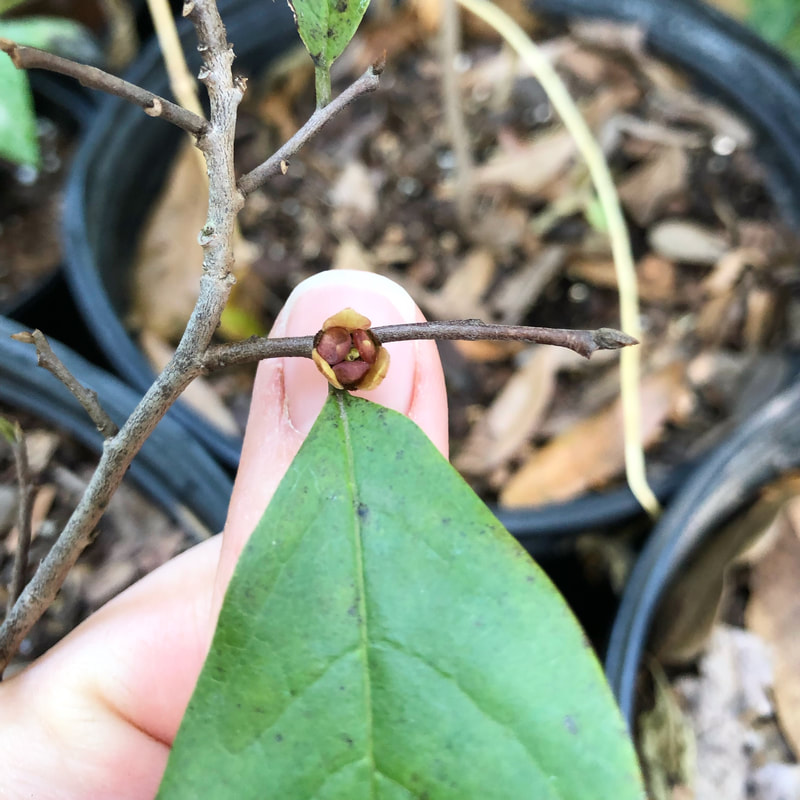Smallflower Pawpaw ( Asimina parviflora)
I perform best in part shade.
Average water needs.
Size: up to 15ft tall x up to 10ft wide
Bloom Time: Spring
The smallflower pawpaw is a fruit-producing, small spindly tree in the apple custard family. It can be difficult to establish because of its long taproot, but with the right care, it will eventually thrive in a normal home landscape. It is a bit inconspicuous until blooming, when its blooms send off an odd odor that is attractive to blowflies and beetle pollinators. It is widely known as the host plant for the zebra swallowtail butterfly and pawpaw sphinx moth. The specialization of the swallowtail and moth and few others has to do with the fact that all paw paws produce compounds called acetogenins, which act as insecticides. As such, only a small handful of insects have adapted to be able to tolerate these toxic compounds.
https://www.fnps.org/plants/plant/asimina-parviflora
http://florida.plantatlas.usf.edu/Plant.aspx?id=529
Average water needs.
Size: up to 15ft tall x up to 10ft wide
Bloom Time: Spring
The smallflower pawpaw is a fruit-producing, small spindly tree in the apple custard family. It can be difficult to establish because of its long taproot, but with the right care, it will eventually thrive in a normal home landscape. It is a bit inconspicuous until blooming, when its blooms send off an odd odor that is attractive to blowflies and beetle pollinators. It is widely known as the host plant for the zebra swallowtail butterfly and pawpaw sphinx moth. The specialization of the swallowtail and moth and few others has to do with the fact that all paw paws produce compounds called acetogenins, which act as insecticides. As such, only a small handful of insects have adapted to be able to tolerate these toxic compounds.
https://www.fnps.org/plants/plant/asimina-parviflora
http://florida.plantatlas.usf.edu/Plant.aspx?id=529

